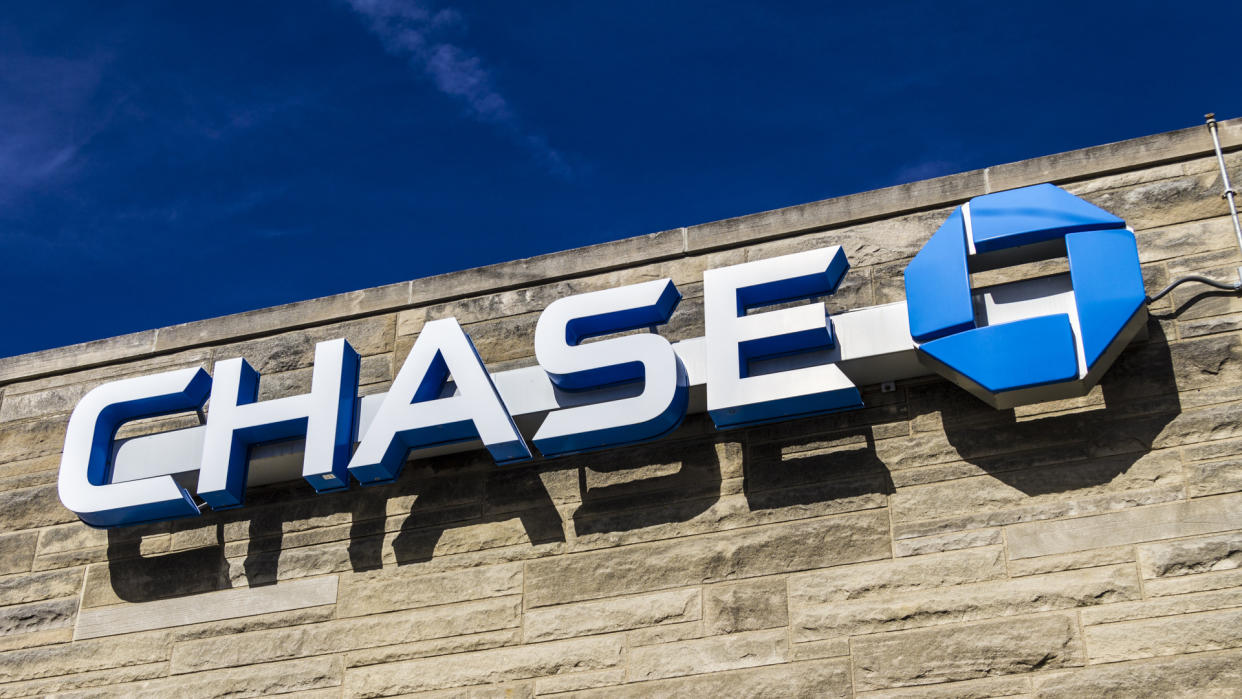Top 10 Banks Americans Deposit Their Money In — and How To Know It’s Safe

Banks are often considered to be safe institutions, covered by federal insurance and required to meet rigorous liquidity standards. From time to time, though, a financial crisis hits the banking industry.
See: 7 States Considering More Stimulus Checks in 2023
Know: How To Guard Your Wealth From a Potential Banking Crisis With Gold
From 1980 through 1994, for example, more banks insured by the Federal Deposit Insurance Corporation (FDIC) were closed or received FDIC insurance than any other period in its entire history — more than 1,600. In 2008, the financial crisis caused 25 banks to fail, followed by more than 400 in the next three years. Washington Mutual was one of the victims of the 2008 financial crisis, becoming the largest bank failure in history.
Headlines in 2023 surrounded Silicon Valley Bank, Signature Bank and First Republic Bank, three major bank failures that happened nearly overnight. These types of newsworthy failures can rightfully make Americans uneasy about where they deposit their money. To help navigate the waters, GOBankingRates took a look at where Americans deposit their money and the nature of the institutions that hold the money. To learn about the state of banking in America, read on.
Top 10 Banks by Total Deposits
According to FDIC data, there were 4,715 financial institutions on record as of Dec. 31, 2022. Here’s a ranked list of the 10 largest banks in the U.S. in terms of total deposits. The percentage of the $17 trillion currently on deposit in American banks is also noted for each institution.
Financial Institution | Assets on Deposit | % of Total U.S. Deposits |
JP Morgan Chase | $ 2,014,513,000,000 | 11.85% |
Bank of America | $ 1,929,333,000,000 | 11.35% |
Wells Fargo | $ 1,399,274,000,000 | 8.23% |
Citibank | $ 777,024,000,000 | 4.57% |
U.S. Bank | $ 453,331,532,000 | 2.67% |
PNC Bank | $ 441,663,089,000 | 2.60% |
Truist Bank | $ 424,773,000,000 | 2.50% |
Capital One | $ 354,959,946,000 | 2.08% |
Goldman Sachs | $ 352,005,000,000 | 2.07% |
TD Bank | $ 329,741,187,000 | 1.94% |
How Does FDIC Insurance Work?
The good news for the average American is that FDIC insurance generally protects all of their money, even in the event of a failure. The FDIC insures depositors for up to $250,000 per insured bank for each account ownership category. This means that if you have $250,000 in a savings account, $250,000 in a joint account and $250,000 in a retirement account, all of your money would be insured.
Poll: Are You Concerned About the Safety of Your Money in Your Bank Accounts?
However, even with these fairly generous provisions, a large percentage of deposits — roughly 41% — are too large to be covered. According to an analysis from JPMorgan, nearly $7 trillion of the total $17 trillion deposited at U.S. banks is not insured by the FDIC. According to data from Visual Capitalist, as of April 2023, here were the top 10 banks with the most uninsured deposits:
Silicon Valley Bank, 93.8% uninsured
BNY Mellon, 92.0%
State Street, 91.2%
Signature Bank, 89.3%
Northern Trust, 81.6%
Citibank, 73.7%
CIBC, 73.1%
HSBC, 70.6%
City National Bank, 70.3%
First Republic Bank, 67.4%
Having a large percentage of deposits doesn’t necessarily mean a bank is more susceptible to failure. However, it’s worth noting that three of the top 10 banks with the highest level of uninsured deposits were the ones that failed in 2023.
For most investors, this statistic doesn’t mean too much, as their deposits remain insured. But it could potentially put large depositors in a riskier position if a bank were to fail. Bear in mind, however, that for two of the notable bank failures in 2023, the federal government has stepped in and assumed responsibility to cover all deposits, even those in excess of FDIC limits. The third bank, First Republic, had its assets covered by JPMorgan Chase.
What Should You Do With Your Money?
The bottom line is that in spite of some newsworthy headlines in 2023, the banking system is solid. Even in a worst-case scenario, most depositors are formally covered by FDIC insurance. And based on the actions of regulators in 2023, even larger, uninsured depositors may be covered in the future.
However, there is no guarantee of this. Treasury Secretary Janet Yellen has said there is only a guarantee of this coverage if a bank poses the risk of systemic failure — likely meaning some or all of the banks in the top 10 list above. If you don’t want to take that chance with your deposits, now might be the time to move some of your uninsured money to other institutions where it will be protected.
More From GOBankingRates
This article originally appeared on GOBankingRates.com: Top 10 Banks Americans Deposit Their Money In — and How To Know It’s Safe
